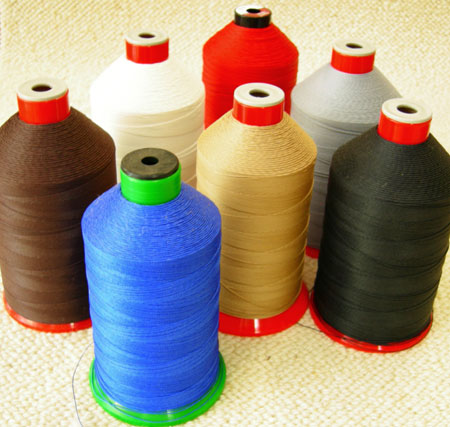Do You Need Help?
Let Us Guide You.

Martin and his overlocker
With over 30 years of hands-on experience in the carpet overlocking industry, we’ve tackled a myriad of challenges and are here to share our knowledge with fellow tradespeople. Whether you’re looking to refine your technique or troubleshoot issues, our goal is to help you achieve the best possible results.
We encourage you to reach out with any questions or to visit our setup for a firsthand look at our processes (just give us a call first).
Expert Tips and Best Practices
1. Choosing the Right Yarn
Your choice of yarn can significantly impact the quality and durability of your overlocking work. Here are some insights to help you make the best selection:
- Problematic Yarns: Certain yarns just don’t stitch well due to being lumpy, overly stretchy, or sticky. If you encounter such yarns, it’s best to dispose of them rather than compromise your work.
- Polypropylene Yarn: This yarn runs the smoothest because of its consistent thickness and smooth texture. It doesn’t stretch, making it a reliable choice for most projects.
- Nylon Yarn: While nylon provides great results when properly managed, it can be stretchy and sticky. To work with nylon, loosen the thread tension and occasionally spray the yarn with silicone to reduce stickiness. With the right tension settings, nylon can deliver a clean and professional finish.
- Wool Yarn: Wool offers excellent coverage and a premium finish. However, not all wool yarns are suitable. Opt for an even thickness and two-ply yarn. For unique colors, 8-ply knitting wool from a local shop can be a good alternative, with 100 grams typically overlocking about 10 meters.
2. Optimizing Yarn Feed

To feed well, yarn needs to be positioned nearly horizontal. Height here is around 6 feet from the floor.
Proper yarn feed setup is crucial to avoid tension issues and ensure smooth operation:
- Mounting Position: Always mount your yarn on a wall or stand away from the machine, ideally at least 2 meters away.
- Orientation: Position the cone horizontally and at a height where the yarn can travel downhill. This setup helps maintain consistent tension and prevents issues such as scalloping, which can occur when the yarn weight pulls upwards.
3. Choosing the Right Threads

We can supply quality threads in a range of colours
Quality threads are essential for strong and durable stitches:
- Thread Type: We recommend using poly-cotton or solution dyed nylon threads, specifically 20 denier, for optimal durability and performance.
- Machine Setup: On a three-thread machine, using high-quality threads ensures consistent and reliable stitching.
4. Machine Maintenance
Regular maintenance of your overlocking machine ensures it runs efficiently and extends its lifespan:
- Cleaning: Frequently clean your machine to remove lint, dust, and yarn fragments.
- Oiling: Lubricate the moving parts as per the manufacturer’s instructions to keep your machine running smoothly.
- Tension Checks: Regularly check and adjust thread tensions to prevent stitching issues like puckering or thread breaking.
5. Troubleshooting Common Issues
Encountering issues is part of the learning process. Here are solutions to some common problems:
- Thread Breaking: This could be due to incorrect tension, a damaged needle, or poor-quality thread. Ensure you’re using high-quality materials and your machine settings are correct.
- Skipped Stitches: Often caused by a blunt needle or incorrect timing. Replace the needle if necessary and check the machine timing.
- Puckering: May result from improper tension, the wrong type of needle, or fabric handling issues. Adjust the tension and ensure proper needle and fabric handling techniques.
We hope these tips and best practices help you achieve superior results in your overlocking projects. If you have any questions or need specific advice, don’t hesitate to contact us or arrange a visit to our setup!

